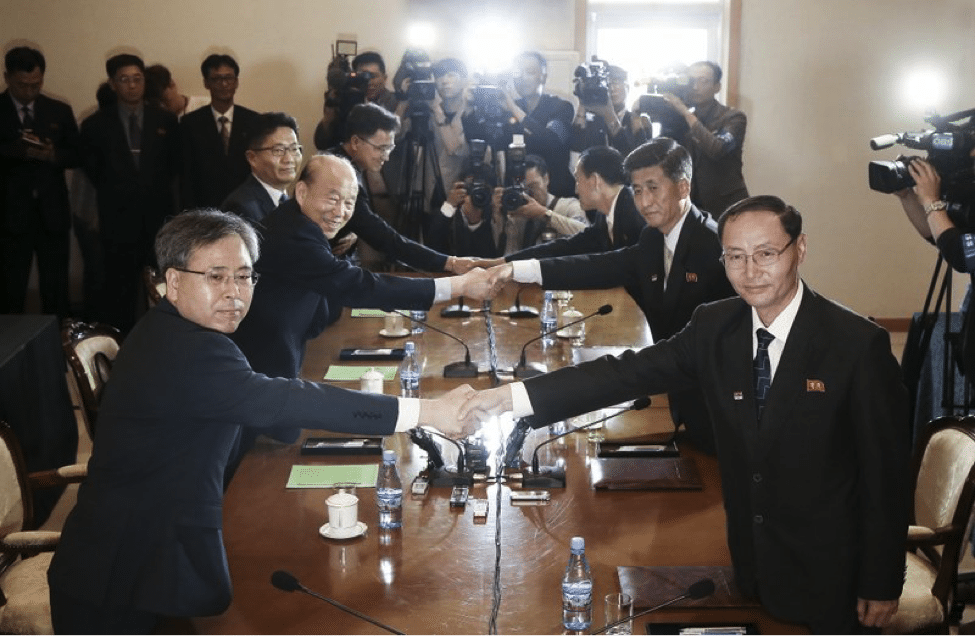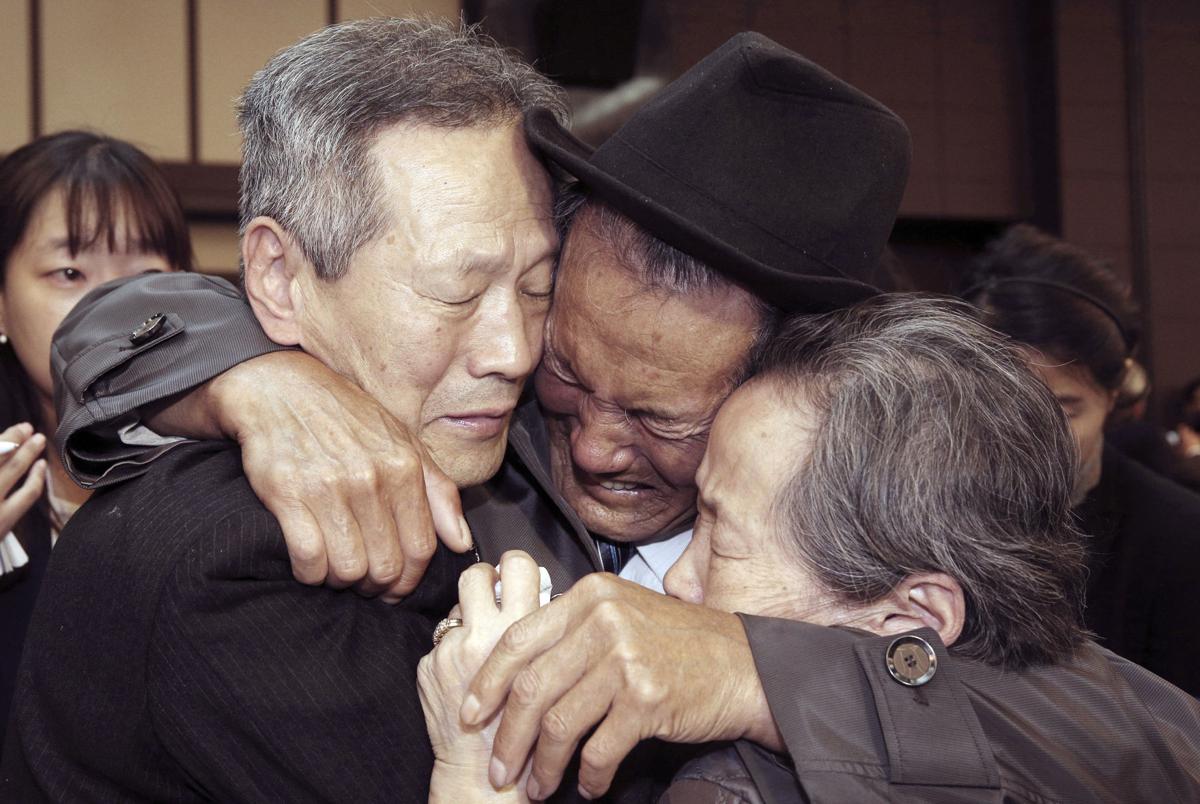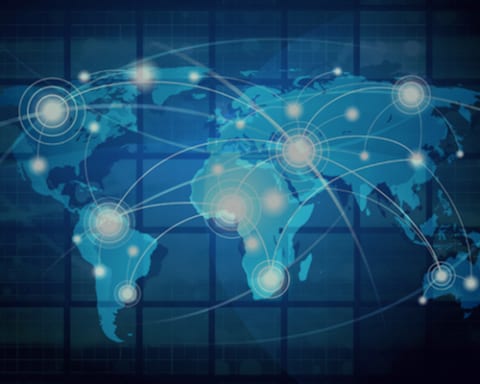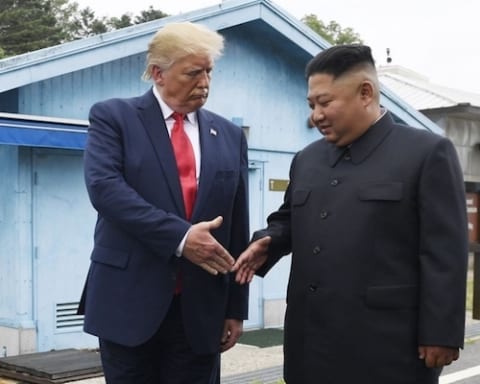An upcoming reunion of families that were separated by the Korean War, set for August 20th through 26th, is highlighting the complications of relations between the Koreas. South Korea is now forced to reckon with viewing its neighbor as both family and an enemy.
After the loss of the conservative Liberty Korea Party to the liberal Democratic Party of Korea (Minju Party) in May 2017, peaceful relations between the two Koreas was expected to improve. The former Liberty Korea Party had fostered a more aggressive approach towards North Korea, maintaining that North Korea was still the enemy. Meanwhile Minju Party candidate, current President Moon Jae-in, had run on a platform that sought to improve peaceful relations with North Korea, actively engaging in constructive dialogue. This approach, in large part, has led to the current atmosphere and recent peace talks.
The Liberty Korea Party, while in power, had held the position that family reunion events – 20 have been held since 1985 with the last in 2015 – were for the most part a ruse by North Korea to gain aid and concessions and have South Korea foot the bill. Over time the costs to South Korea have amounted to over 1.6 billion US dollars.
During the inter-Korean talks this April, South Korean President Moon Jae-in and North Korean leader Kim Jung Un discussed the reunion of families separated by the division of the two countries. This led to events last week, where, on June 22nd, the two nations engaged in what is being called the Red Cross talks to negotiate another prospective reunion. South Korean Red Cross President Park Kyung-seo and North Korean counterpart Pak Yong Il met and agreed to hold the reunion event from August 20th to 26th to coincide with National Liberation Day (commemorating the countries’ liberation from Japan).

On June 27th, a South Korean facility inspection team of about 20 people visited Geumgang Reception Center in North Korea to remain until June 29th. The facility has been unused since the last reunion in October 2015.
Koreas reunion raises questions about its effectiveness
While North Korea has decided to hold the reunion for the first time in almost 3 years, separated families still have reason to worry. According to the agreement, only 100 people from each country can attend. During the last 20 official reunification events since August 2000, only about 19,771 people of 4,120 families have been able to attend the events and meet their families for what becomes a very emotional several days. Included have been seven video meetings where 3,748 people of 557 families have attended.
These are one time events. No Koreans have ever been given a second chance to see their family members.
According to the Unification Ministry of South Korea, 132,114 people have applied for a reunion from 1988 to May 2018, and 41% (23,569) of the applicants were aged 80 or older. South Korea uses a lottery system to pick participants, and the Korean Red Cross states that the competition rate is 569 to 1.
Kim Kyung jae, chairman of the Inter-Korean Separated Family Council (a South Korean organisation of individuals who have been separated from their families), applied to be able to reunite with his family in 2000, but was unable to meet his parents and younger sister. He compares a ticket to attend the reunion event to a lottery win. This seems like an especially accurate comparison given that the criterion by which families are chosen to be a part of the reunions is essentially a mystery.
Kim said, “Honestly, I don’t expect to be selected. I just hope to visit my hometown and meet my family before it is too late.” He is waiting to hear from the South Korean government about the upcoming reunion event.

South Korean citizens are also expressing worry about North Korea’s past behavior of using the reunion events to demand resources from South Korea. A parliamentary audit reported that South Korea spent about 1.5 billion US dollars to hold reunion events and open peaceful dialogue during the 10 years that Minju Party Presidents Kim Dae-jung and Roh Moo-hyun were in power until 2013. Leadership under the Liberty Korea Party spent upwards of 90 million US dollars from 2014 through 2017.
Also, South Korea plans to repair the Geumgang Reception Center on June 27. The building has been neglected for 3 years, and South Korea is undertaking its renovation for the express purpose of holding the next reunion. Other requirements by North Korea are not yet revealed.
According to the released statement about the reunion, the requests by the families for the confirmation of life and death of family members, the newsletter for the event, and the final list of families who can attend will be exchanged between the two Koreas officially on July, 3, July 25, and August 4, respectively.
[Main Image: Kim Do-hoon/Yonhap via AP]
LIMA CHARLIE NEWS, by Du “Dennis” On
Du On (Dennis) is a veteran of the Republic of Korea Army. Dennis is currently attending Stony Brook University in New York, majoring in Business Administration and Management. While in South Korea, Dennis worked in the Human Resources Development Division of the City Hall of Gimje as a Public Social Worker.
Lima Charlie provides global news, featuring insight & analysis by military veterans and service members Worldwide.
For up-to-date news, please follow us on twitter at @LimaCharlieNews
In case you missed it:

![Image 21st Korean family reunion for families separated by war highlights complications of relations between the Koreas [Lima Charlie News][Photo: Kim Do-hoon/Yonhap via AP]](https://limacharlienews.com/wp-content/uploads/2018/06/21st-Korean-family-reunion-for-families-separated-by-war-highlights-complications-of-relations-between-the-Koreas.jpg)



![Image Korea: Is Trump Bringing Peace in Our Time? [Lima Charlie News]](https://limacharlienews.com/wp-content/uploads/2018/05/Korea-Is-Trump-Bringing-Peace-in-Our-Time-480x384.png)


![Blossoming Russo-Turkish alliance leaves U.S., NATO behind [Lima Charlie News]](https://limacharlienews.com/wp-content/uploads/2019/07/Russia-Turkey-alliance-leaves-U.S.-NATO-behind-480x384.png)


![Image Korea: Is Trump Bringing Peace in Our Time? [Lima Charlie News]](https://limacharlienews.com/wp-content/uploads/2018/05/Korea-Is-Trump-Bringing-Peace-in-Our-Time-150x100.png)